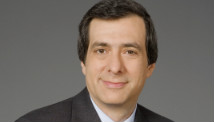BANGKOK (AP) — Japan’s benchmark stock index jumped Tuesday as a softening yen helped boost the country’s powerhouse export sector. The Nikkei 225 index in Tokyo rallied 1.4 percent to close at 10,080.12, with export shares leading the way.
The yen traded at a 20-month high of 84.95 yen in New York after incoming Prime Minister Shinzo Abe turned up the pressure on the Bank of Japan to adopt a 2 percent inflation target. During a televised program Sunday, Abe said he will consider revising the Bank of Japan Act if the central bank refuses to act at next month’s policy meeting, Kyodo News Agency said.
That’s designed to fight deflation, or continually dropping prices, which deadens economic activity. The Japanese economy has been stuck in deflation for two decades. On Monday in Asia, the dollar stood at 84.77 yen.
Mazda Motor Corp. gained 2 percent, while Nikon Corp. advanced 2.3 percent. Nomura Holdings jumped 6.3 percent.
Stocks in mainland China posted strong gains. The Shanghai Composite Index jumped 2.5 percent to 2,213.61. The smaller Shenzhen Composite Index surged 2.4 percent to 855.79. Shares in real estate, financial services and travel-related companies led the gains.
Poly Real Estate, China’s second-largest listed developer, gained 4.7 percent while industry leader China Vanke soared 6 percent.
Markets in Hong Kong, South Korea, Singapore, the Philippines, Australia and New Zealand were among those closed for Christmas.
On Wall Street on Monday, the last day of trading before Christmas, stocks fell on concern that time is running out for lawmakers to reach a budget deal to avoid the U.S. going over the “fiscal cliff.”
The Dow Jones industrial average lost 0.4 percent to close at 13,139.08. The Standard & Poor’s 500 index fell 0.2 percent to 1,426.66. The Nasdaq composite index fell 0.2 percent to 3,012.60.
For weeks, discussions between the White House and Congress over a budget deal have been the main driver in markets. If a deal isn’t reached by the start of 2013, automatic spending cuts and tax increases worth hundreds of billions of dollars will be imposed — which many economists think could push the U.S. economy back into recession.
Most markets across Europe were open for only half a day on Monday and won’t reopen until Thursday.
As well as monitoring developments in the U.S. over the coming days, investors will be keeping a close watch on what’s going on in Italy ahead of a general election in February.
Over the weekend, outgoing Prime Minister Mario Monti indicated that he would be willing to return to the role if pro-reform parties back him. Monti has won praise for his economic reforms and efforts to get a grip on the country’s borrowing. Italy has the second-highest debt burden among the 17 EU countries that use the euro. Only Greece’s is higher.
Meanwhile, Platts, the energy information arm of McGraw-Hill Cos., said in a report that China’s apparent oil demand rose 9.1 percent in November from a year earlier to 42.96 million metric tons, an average of 10.5 million barrels per day, the highest on record.
___
Follow Pamela Sampson on Twitter at http://twitter.com/pamelasampson
___
AP researcher Fu Ting contributed from Shanghai.
International News and Information on Yahoo! Finance
Title Post: Japan stocks rally as yen continues to weaken
Rating:
100%
based on 99998 ratings.
5 user reviews.
Author:
Thanks for visiting the blog, If any criticism and suggestions please leave a comment





